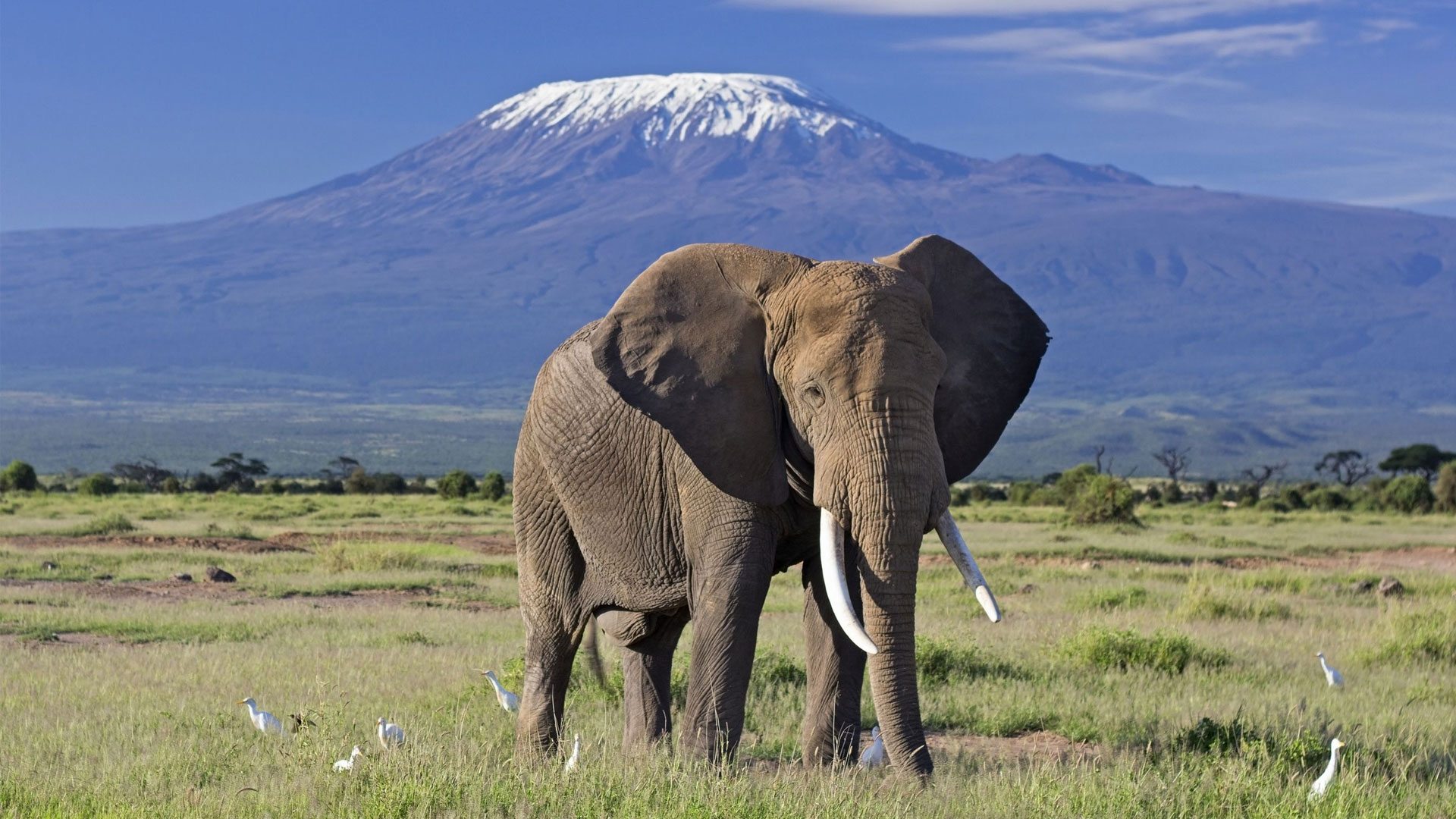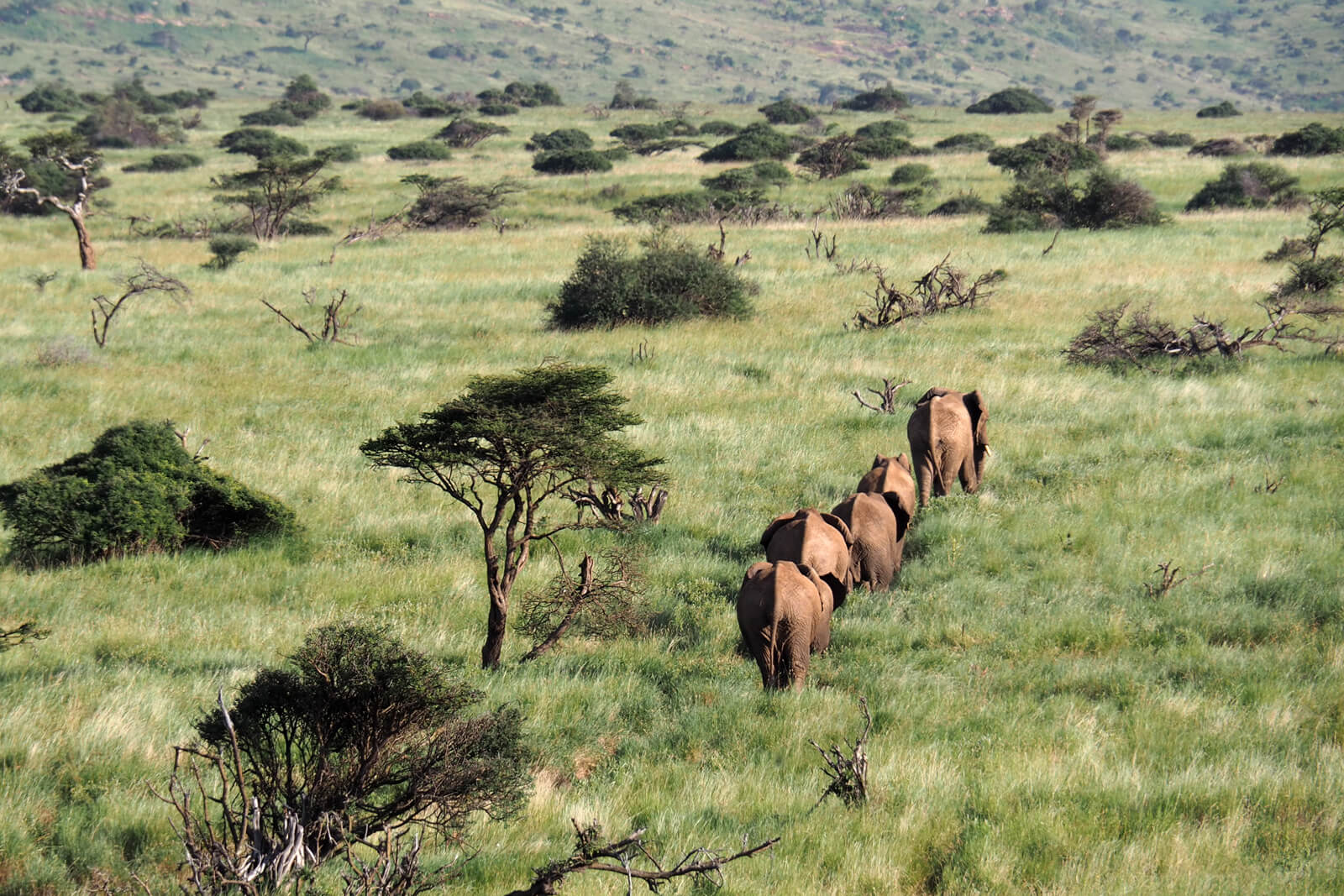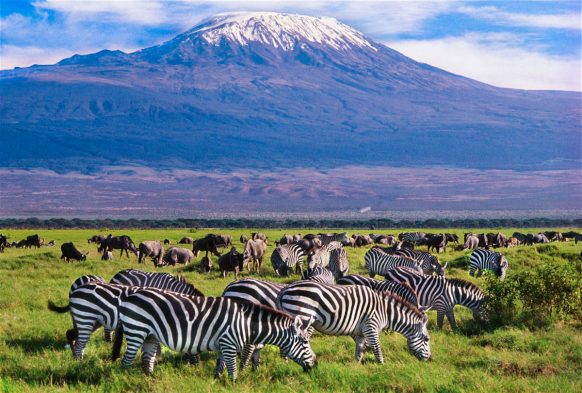
Amboseli
Where Giants Meet Africa's Highest Peak
About Amboseli
Picture yourself standing on vast, dusty plains as massive elephant herds move gracefully across the landscape, with Africa's highest mountain rising majestically in the background. Amboseli National Park is one of Kenya's most iconic safari destinations, famous for offering the best close encounters with free-ranging elephants anywhere in Africa [1]. This 392-square-kilometer park sits at the northern foot of Mount Kilimanjaro, just 240 kilometers southeast of Nairobi, making it incredibly accessible for an unforgettable African adventure [3][7].
What makes Amboseli truly special is its unique combination of attractions. The park is home to up to fifty elephant herds that you can observe in a single safari, along with four members of the Big Five and over 420 bird species [3][8]. The stunning backdrop of snow-capped Mount Kilimanjaro creates some of Africa's most breathtaking photography opportunities, especially at dawn when soft pink light illuminates the 5,895-meter peak [7].
The name "Amboseli" comes from a Maasai word meaning "salty dust," referring to the volcanic ash that blankets the area from ancient Kilimanjaro eruptions [17]. This creates an otherworldly landscape of big skies and far horizons combined with swampy springs and dry, dusty earth trampled by hundreds of animals [1]. The park sits at the core of an 8,000-square-kilometer ecosystem that spreads across the Kenya-Tanzania border, making it a vital wildlife corridor [1].
Amboseli's five distinct habitats—open plains, acacia woodland, thorn scrub, swamps, and marshlands—create diverse environments for wildlife viewing [7]. The park has two expansive swamps, Enkongo Narok and Longinye, which are fed by underground water filtered through thousands of feet of volcanic rock from Kilimanjaro's ice cap [1][15]. These perennial water sources make Amboseli a reliable destination year-round, as wildlife congregates around these life-giving springs even during dry seasons [1].
Beyond the elephants and mountain views, Amboseli offers authentic encounters with Maasai culture. The Maasai have stewarded this land for generations, and their traditional pastoral lifestyle has been crucial in conserving the ecosystem [3][19]. Visitors can interact with Maasai communities in their traditional villages (manyattas) and established cultural centers, learning about their customs and way of life while supporting local communities [3]. Let our travel experts help you discover this incredible adventure and arrange authentic, respectful cultural experiences that benefit local communities.
The park presents exceptional opportunities for wildlife photography and bird watching. You can expect to see zebras, warthogs, giraffes, buffalo, hippos, impalas, and wildebeest roaming the plains [7]. Unusual antelope species like the fringe-eared oryx and gerenuk add to the wildlife diversity [7]. While predator sightings are less frequent than in other Kenyan parks, patient observers may spot lions that have increasingly tolerated human presence in recent years [7].
Amboseli is recognized as one of Kenya's 62 Important Bird Areas and is globally significant for bird conservation, with over 500 bird species recorded in the ecosystem [24]. The seasonal swamps attract migratory birds, making it a premier destination for birdwatchers, especially during the rainy seasons when everything turns lush green [7][12].
The park's accessibility makes it perfect for travelers of all experience levels. You can reach Amboseli by road from Nairobi in about 4-5 hours via multiple routes, or by light aircraft to the Kimana airstrip [3][8]. Multiple entry gates—Iremito, Kimana, and Meshanani—provide flexible access options [3]. Our local partnerships ensure smooth logistics and authentic, easy-to-embrace experiences that let you focus on the adventure.
Accommodation options range from budget-friendly campsites to luxury safari lodges, with average hotel costs around $281-309 per night for mid-range options [2][9]. The Kenya Wildlife Service manages several bandas and guesthouses with well-equipped kitchenettes, electricity, and basic amenities [3][8]. Public campsites don't require advance booking, making spontaneous visits possible [3].
Adventure doesn't have to be complicated. Whether you're a first-time safari-goer or a seasoned wildlife enthusiast, Amboseli welcomes everyone. The park offers game viewing, bird watching, picnicking, photography, camping, cultural tourism, and even hot air balloon safaris for a truly unique perspective [3]. Ready to explore? Your adventure awaits, and it's easier than you think. Let our travel specialists craft the perfect Amboseli itinerary tailored to your interests, budget, and travel style.
Best Time to Visit
The best time to visit Amboseli is during the dry season from June to October and January to February, when wildlife congregates around water sources and roads are most accessible <a href="#citation-7" class="citation-link text-blue-600 hover:text-blue-800 hover:underline font-medium" data-citation="7">[7]</a><a href="#citation-12" class="citation-link text-blue-600 hover:text-blue-800 hover:underline font-medium" data-citation="12">[12]</a><a href="#citation-13" class="citation-link text-blue-600 hover:text-blue-800 hover:underline font-medium" data-citation="13">[13]</a>. During these months, expect warm daytime temperatures averaging 28°C (82°F) with cooler evenings around 15°C (59°F) <a href="#citation-12" class="citation-link text-blue-600 hover:text-blue-800 hover:underline font-medium" data-citation="12">[12]</a>. June to July marks the beginning of peak safari season with pleasant weather and excellent wildlife viewing without heavy rain <a href="#citation-13" class="citation-link text-blue-600 hover:text-blue-800 hover:underline font-medium" data-citation="13">[13]</a>. July through October offers superb conditions, with October providing a good balance between exceptional wildlife encounters and fewer crowds as peak season winds down <a href="#citation-13" class="citation-link text-blue-600 hover:text-blue-800 hover:underline font-medium" data-citation="13">[13]</a>. January to February brings the "Lion Season" when newborn calves attract predators, creating dramatic wildlife interactions <a href="#citation-12" class="citation-link text-blue-600 hover:text-blue-800 hover:underline font-medium" data-citation="12">[12]</a>. The rainy season from April to May (long rains) and November to December (short rains) brings challenges like rough roads and thick vegetation that makes spotting animals more difficult <a href="#citation-7" class="citation-link text-blue-600 hover:text-blue-800 hover:underline font-medium" data-citation="7">[7]</a><a href="#citation-12" class="citation-link text-blue-600 hover:text-blue-800 hover:underline font-medium" data-citation="12">[12]</a><a href="#citation-13" class="citation-link text-blue-600 hover:text-blue-800 hover:underline font-medium" data-citation="13">[13]</a>. However, these months offer advantages: fewer tourists, lower prices, lush green landscapes perfect for photographers, migratory birds in thousands, and opportunities to see newborn animals <a href="#citation-13" class="citation-link text-blue-600 hover:text-blue-800 hover:underline font-medium" data-citation="13">[13]</a>. The rainy season also features spectacular blooming trees and flowers creating ideal shelter for birds <a href="#citation-12" class="citation-link text-blue-600 hover:text-blue-800 hover:underline font-medium" data-citation="12">[12]</a>. While wildlife viewing is possible year-round, the park's climatic patterns can swing from drought to flood, so checking current conditions before travel is wise <a href="#citation-1" class="citation-link text-blue-600 hover:text-blue-800 hover:underline font-medium" data-citation="1">[1]</a>.
Key Features
- Africa's best destination for close elephant encounters [1][3]
- Snow-capped Mount Kilimanjaro as iconic backdrop [1][7]
- 392 square kilometers of protected wilderness [1][3]
- Eight thousand square kilometer ecosystem spanning Kenya-Tanzania border [1]
Gallery
Explore stunning images of Amboseli
Key Highlights
Up to fifty elephant herds in a single safari—the best close encounters with free-ranging elephants in Africa [1][3]
Stunning Mount Kilimanjaro backdrop, especially at dawn and dusk when the snow-capped peak glows against colorful skies [7][17]
Four members of the Big Five: lions, elephants, buffalo, and leopards (rhinos are extinct in the park) [3][8]
Over 420 bird species making it a premier birding destination and recognized Important Bird Area [24]
Authentic Maasai cultural experiences in traditional villages and cultural centers [3][16]
Two expansive swamps (Enkongo Narok and Longinye) teeming with wildlife year-round [15]
Hot air balloon safaris offering unique aerial perspectives of the plains and Kilimanjaro [3][8]
Diverse wildlife including zebras, giraffes, warthogs, impalas, wildebeest, hippos, and unusual antelopes like gerenuk and fringe-eared oryx [7]
Exceptional photography opportunities with dramatic landscapes and wildlife against mountain backdrop [7][17]
Five distinct habitats providing varied ecosystems and wildlife viewing experiences [15]
Destinations in Amboseli
Discover parks and reserves in this region

Amboseli
Where Elephants Roam Free, Kilimanjaro Reigns Supreme
- Massive herds of African elephants—up to fifty herds visible in a single safari, the best elephant viewing in Africa
- Stunning views of snow-capped Mount Kilimanjaro, especially at sunrise and sunset
- Four members of the Big Five (lions, leopards, buffalo, and elephants) plus rhino-free plains

Selenkay Conservancy
Authentic Safari, Real Conservation, Maasai Spirit
- Exclusive wildlife viewing with minimal tourist presence—only one safari camp in 15,000 acres
- Exceptional elephant encounters in a protected conservancy where these magnificent animals have made a triumphant return
- Expert Maasai safari guides who combine wildlife knowledge with cultural storytelling
Plan Your Trip to Amboseli
Let our local experts craft your perfect Amboseli safari experience
Plan Your Safari

